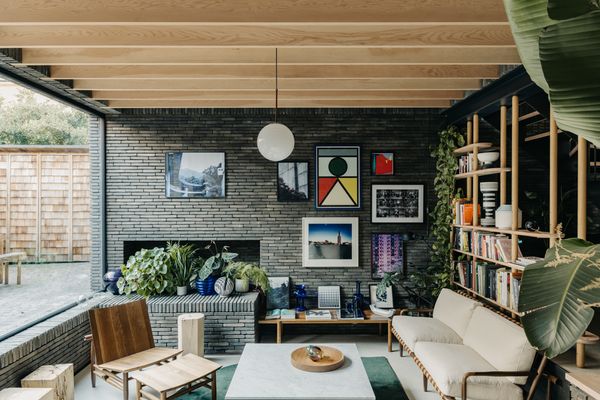The Hungarian sea. The largest lake in Central Europe. It becomes the heartbeat of the country every summer. Lake Balaton, with its thousand faces, is certainly one of the best known and most iconic Hungarian regions, long enjoyed by locals and tourists alike, regardless of age or social group.

Covering an area of 59,800 hectares, the wetland’s Hungarian name probably derives from the Slavic words blato, boloto, meaning marsh, swamp. The area was inhabited in prehistoric times, later also discovered by the Romans, and for centuries afterward, the operation of the Tihany Abbey, founded in 1055, defined life in the region. Later, in the 19th century, large-scale scientific programs were launched to explore the area, and it was at this time that Count György Festetics founded Europe’s first agricultural higher education institute in Keszthely. In the reform era, Balatonfüred became one of the country’s intellectual centers, frequented by the aristocracy and the most renowned artists of the era. It was not until 1861, however, that real spa life began. This date is linked to the construction of the railway connecting Pest-Buda with Nagykanizsa. A hundred years later, in the 1960s, is when holidays at Lake Balaton became truly widely available: 15,000 different apartments, hotels, children’s camps and holiday resorts were built. In the 1970s and 1980s, more and more Western tourists, mainly German visitors, came to Lake Balaton to holiday with their relatives and friends from the other side of the Iron Curtain.
To this day, bathers, all-day beach-goers, water sports enthusiasts, boaters and sailors, cyclists, party-goers, music festival fans, culture vultures and lovers of old churches, wine regions, excursions and thermal spas can all find what they are looking for. The number of sunshine hours per year rivals that of the French Riviera, with shallow waters easily reaching a temperature of 20-26°C. The area has a characteristic nostalgic atmosphere, enhanced by its socialist architectural heritage and retro beaches. The north and south shores offer a similarly different atmosphere, just like Pest and Buda in the capital: the south shore is more lively and crowded, with shallow beaches, parties and festivals, while the north side is a quieter world, with fantastic panoramas, the Badacsony wine region and the characteristic volcanic buttes.
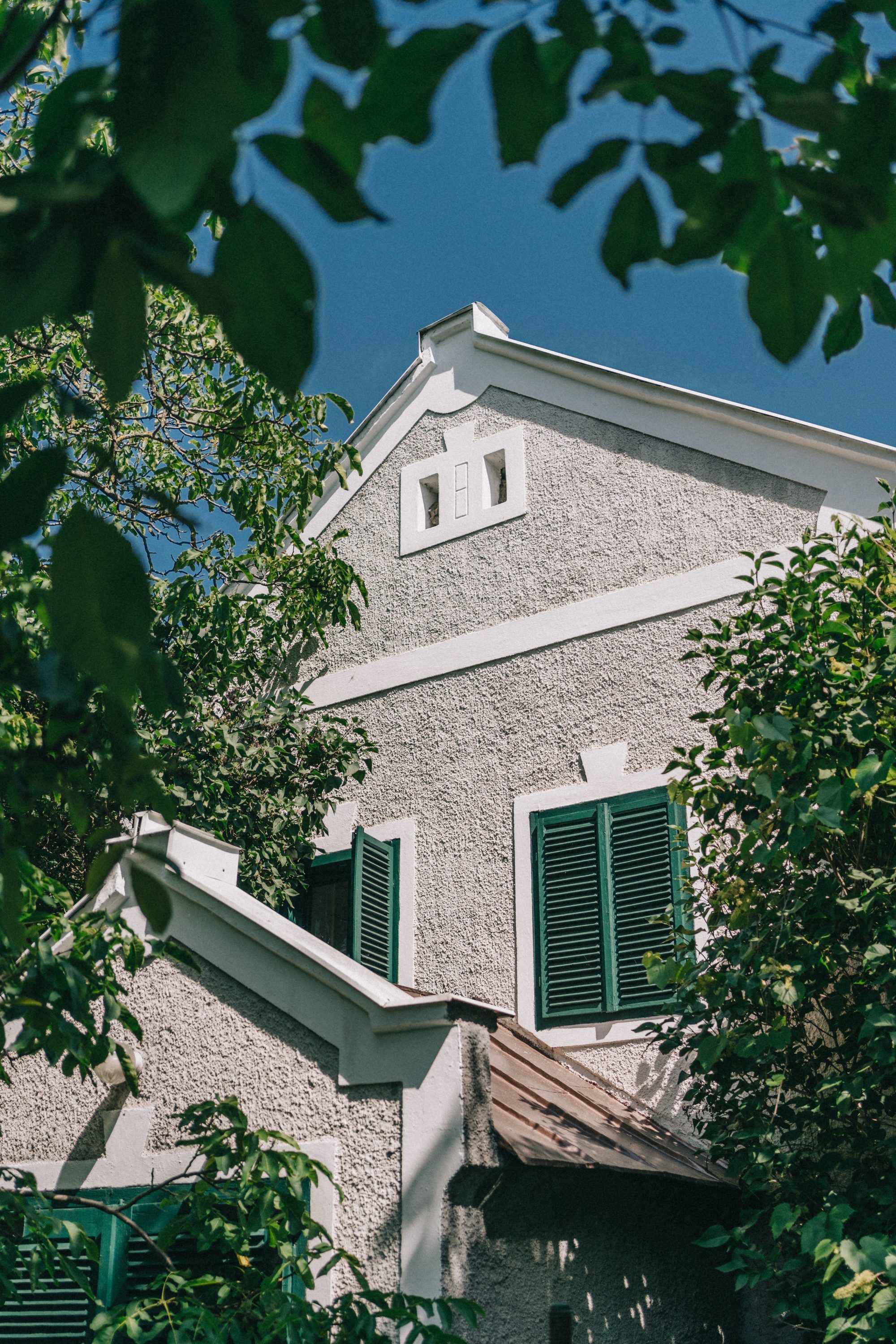
Szászi Birtok—Szászi Birtok was amongst the first certified organic vineyards in Hungary. It also has a cellar, a wine shop and the Viridárium Restaurant. The restaurant has seasonal dishes on its menu which are perfectly accompanied by the winery’s own wines. The summer view of the vineyard from the terrace is gorgeous – you may easily find yourself lost in the marvelous sight for hours, sipping a glass of fine wine.
address: 8265 Hegymagas, Mókus Boulevard

bari.boci—Guest house bari.boci, consisting of the buildings Bari and Boci, is located in Kővágóörs, right at the entrance to the village, thereby also at the entrance to the Káli Basin. The nearly hundred-year-old building made of red stone and the more modern wing that was probably annexed to it in the eighties made it the obvious choice to divide the house into two apartments. When designing the accommodation, the owners strived to preserve the authenticity of the buildings: the interior design combines old pieces of furniture and contemporary items, all arranged around the idea of “less is more”.
address: info@bariboci.hu

KUNSZT! Veszprém—You will find KUNSZT! Housed in the enormous corner shop of Rosenberg House in the center of Veszprém, in Óváros Square. The fact that it’s a design store, a gallery, a community space, a brunch bistro and a café all at once makes KUNSZT! a truly special place. Guests who drop by can browse the artworks of various artists and designers that are all related to Lake Balaton, and can also join workshops and social events.
address: 8200 Veszprém, Óváros Square 1
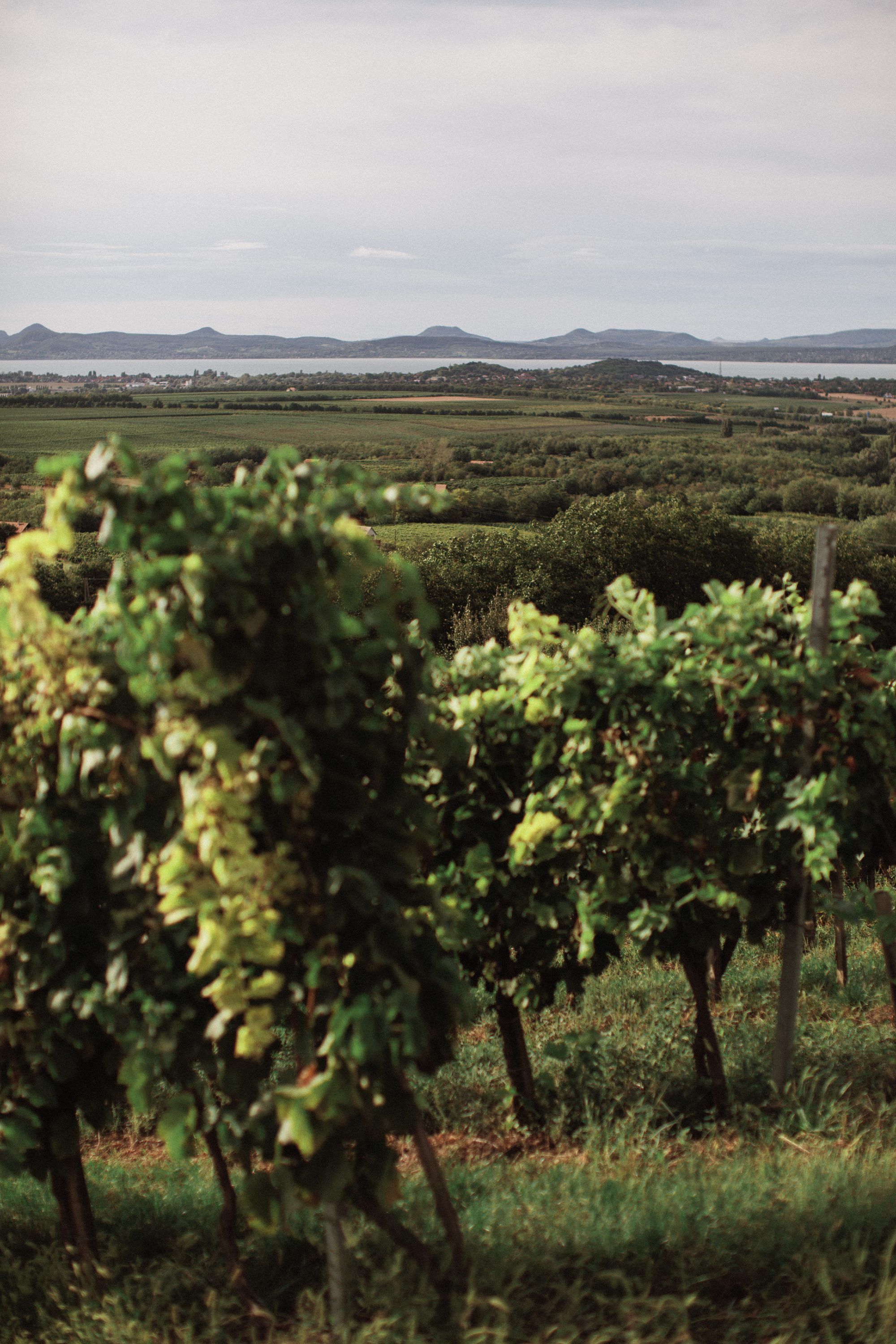
Local Touch—As more and more new-wave restaurants, cafés and bakeries pop up around the lake, we’ve picked three authentic spots recommended by locals. Although the first step to experiencing the true essence of Lake Balaton is to go to almost any beach food kiosk, the triumvirate of lángos, pancakes and cooked corn awaits with open arms at every possible site to transport you back to the previous century. However, the locations now listed are not so easy to stumble upon, and can easily be missed if you don’t know about them. At the top of our list is the Sió Halsütő fish eatery in the Siófok port, and the fact that it’s considered one of the best fish eating places on Lake Balaton is no coincidence. The owner’s family has been working in the Balaton catering industry for almost a century. It was by building on this tradition that János Huszár “made his mark”, creating his own no-frills, simple but great fish eatery. The building, the interior and the material culture are a journey through time in themselves: visitors are greeted by plastic flowers, trays and corrugated metal. Despite appearances, the legendary eatery is a surprise: fresh, perfectly breaded fish dishes are served to guests, to be accompanied by a wine spritzer, leavened cucumber, a thick slice of bread and beach slippers. On the other shore, in the heart of the Káli Basin among the rolling hills of the Balaton Uplands, a special market, the Liliomkert, is open every Sunday of the year. As one of the country’s first farmers’ markets offering handicraft products, it was set up in 2007 by Ildikó Harmathy to revive the culture of market-going: providing a space for local producers and artisans, and a place for visitors to sample and buy the region’s specialities. Jam, syrups, wines, meat, fried bread with sour cream, souvenirs and everything else that visitors could wish for. And when it comes to local producers, the Korosajt Workshop in Nemesbük is a must. Just a few kilometres from Hévíz, the Korosa family farm offers a glimpse into the secrets of cow farming and cheese making. The farmer calls the 18 cows by name to milk them, and they contribute 150 litres of milk a day (with a fat content of 7.3%) to the farm’s speciality cheese assortment: fenugreek seeds, wine-aged, thyme, red onion and fried Korosajt versions, to name but a few of the colourful products on offer. In the summer, there is also a cheese festival for those who are interested.
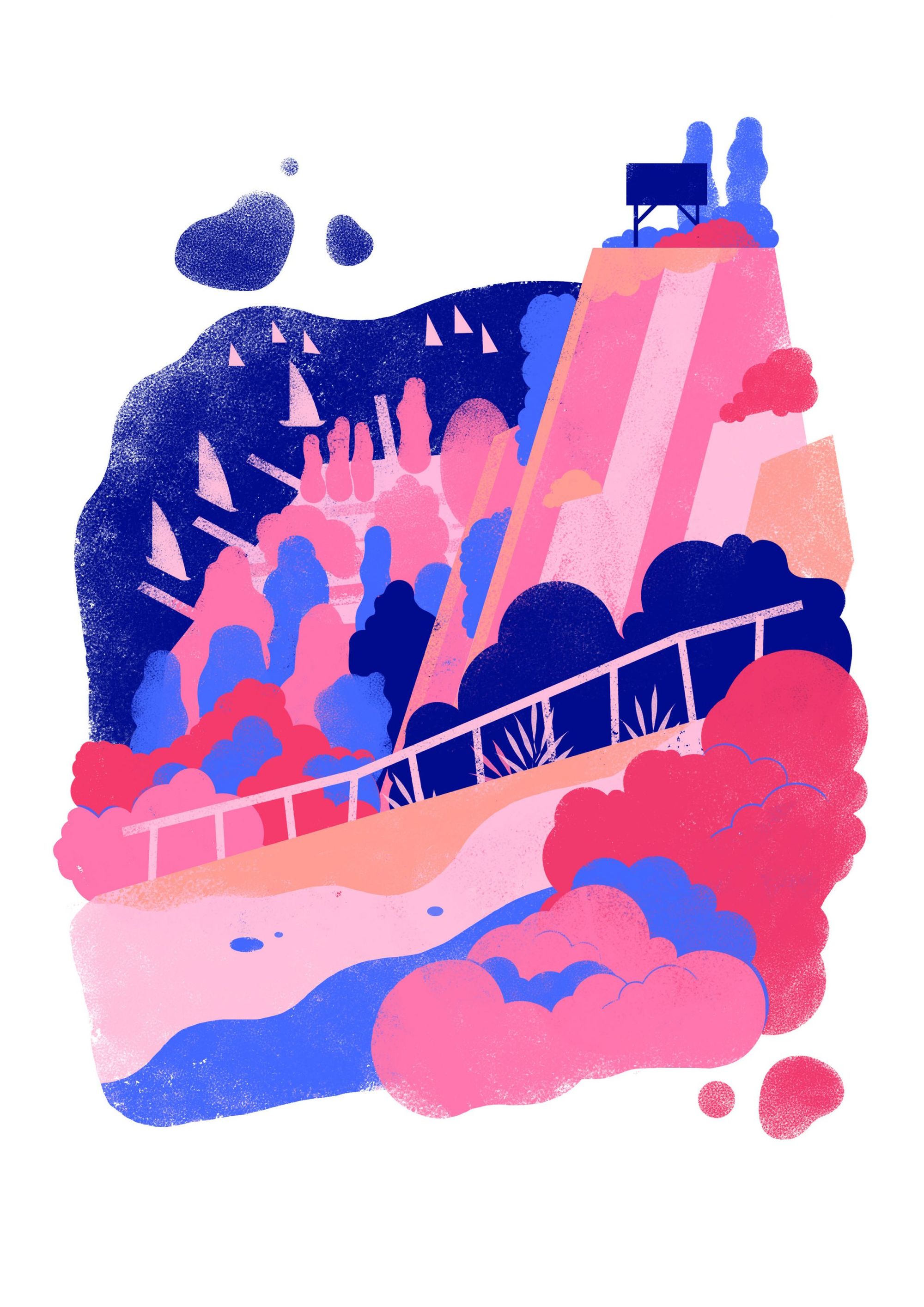
Besides swimming/bathing, Lake Balaton and its surroundings offer many opportunities for sports and hiking. One of the best ways to get to know the lake is to cycle around it, which can be done in a day if you want to face a challenge, but it is also common practice to do the more comfortable two or three-day tour. Three major sporting events are held every year on Lake Balaton: the Balaton Cross Swimming between Révfülöp and Boglár, the Balaton Boat Race (by any hand-powered watercraft) between Fonyód and Badacsony, and the Kékszalag (Blue Ribbon) International Sailing Competition around the whole of the lake, which is a great experience not only as a participant but also as a spectator from the shore. But if you’d rather go on a walking tour, head for the Balaton Uplands. You can take a pleasant hike on the buttes, for example in Csobánc, where you can go paragliding, or if you take the Szent-György hill nature trail, you can enjoy a walk along a 30-40 m high path surrounded by Basalt Organs. The shores of the lake are full of lookouts, two of which we would like to highlight: for example, the Balatonföldvár lookout, with its unique boat-shaped viewpoint, not only offers a panoramic view, but also provides an interactive exhibition on the history of sailing and navigation on Lake Balaton. The lookout built at the top of Halom Hill, the highest point of the Balaton Uplands, is named after Lajos Kossuth, who hid here with his family during the Hungarian Revolution in 1849. Another must-see destination is Tihany, where you can walk the 11 km Lajos Lóczy nature trail past the abbey and the famous lavender festival, along with unique geyser cones. If you’re looking for activities with children, Salföld Manor in the Balaton Uplands National Park is the perfect destination. And if a relaxing spa is what you crave, Hévíz, Europe’s unique, natural peat-bottomed lake with warm water, is a perfect choice.

The COAT celebrates its 7th anniversary with a new showroom
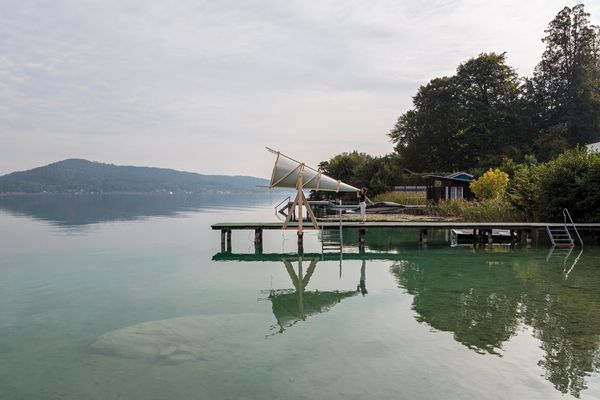
Is nanotourism the future?—Unconventional solutions enrich one of Austria's most important lakes
